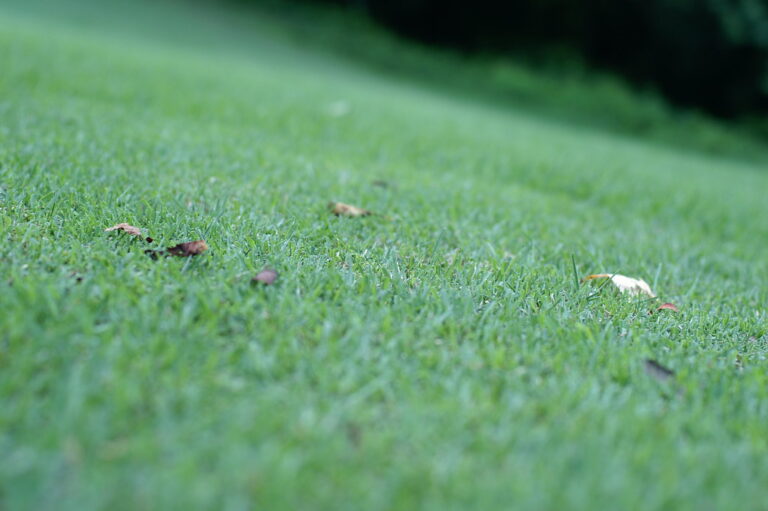Seasonal Lawn Care Guide: Year-Round Tips for a Vibrant and Healthy Lawn

Are you ready to transform your outdoor space into a lush, green oasis that will be the envy of the neighborhood? Look no further – we’ve got all the expert tips and tricks you need to keep your lawn looking its best in every season.
A vibrant and healthy lawn is more than just an aesthetic delight; it also provides a safe haven for kids to play, pets to frolic, and creates a welcoming atmosphere for family gatherings. But maintaining such a picturesque landscape requires some TLC throughout the year. From spring rejuvenation to winter protection, each season demands specific care techniques tailored to optimize growth and resilience.
So grab your gardening gloves and let’s dive into our comprehensive guide on how to nurture your lawn through every season. With our easy-to-follow tips, you’ll have neighbors stopping in their tracks just to admire your beautiful outdoor masterpiece! Let’s get started with spring…
Spring Lawn Care Tips
Spring is here, and it’s time to give your lawn the care it needs to thrive throughout the season. As the temperatures rise and nature comes back to life, your lawn will require some specific attention to ensure its health and vibrancy.
One of the most important spring lawn care tips is proper mowing. Set your mower blades at a higher setting to allow for longer grass length. This helps promote stronger root growth and prevents weed invasion. Remember not to cut more than one-third of the grass height at once.
Spring is also a great time for overseeding bare patches or thin areas in your lawn. By spreading new grass seed evenly over these areas, you can encourage healthy growth and fill in any unsightly gaps.
Next, don’t forget about fertilization! Applying a slow-release fertilizer with nitrogen during early spring can provide essential nutrients that support vigorous green growth.
Proper watering is another crucial aspect of spring lawn care. Deep watering once or twice a week encourages strong root development while reducing shallow-rooted weeds’ chances of survival.
Be proactive in controlling pests and weeds before they become major problems later on. Regularly inspect your lawn for signs of insect damage or weed infestation so you can address them promptly with appropriate treatments.
By following these simple yet effective spring lawn care tips, you’ll set yourself up for success throughout the rest of the year!
Summer Lawn Care Tips
Summer is in full swing, and so is the growth of your lawn! As the temperatures rise and the sun shines down, it’s important to give your turf some extra TLC. Here are some summer lawn care tips to keep your grass looking lush and healthy throughout the season.
Make sure you’re watering your lawn properly. It’s best to water deeply but infrequently, allowing the water to penetrate deep into the soil. This encourages strong root growth and helps your grass withstand heat stress. Water early in the morning or late in the evening when evaporation rates are lower.
Next, don’t mow your lawn too short during hot summer months. Set your mower blades at a higher level to provide shade for the roots and prevent excessive moisture loss from evaporation. Aim to remove no more than one-third of the blade height with each mowing session.
In addition, be on high alert for pests and diseases that thrive in warm weather conditions. Regularly inspect your lawn for signs of grubs, chinch bugs, or fungal infections like brown patch or dollar spot. If you notice any issues, consult with a professional or take appropriate action immediately.
Furthermore, consider applying a slow-release nitrogen fertilizer during this time of year. This will help maintain steady growth without promoting excessive shoot development that can weaken grass against drought stress.
Remember to enjoy your beautiful lawn! Summer is all about outdoor activities and spending quality time outside with family and friends on a vibrant green carpet underfoot!
By following these summer lawn care tips diligently, you’ll set yourself up for success come fall when cooler temperatures arrive again!
Fall Lawn Care Tips
Fall is a crucial time for lawn care as it prepares your grass for the upcoming winter and ensures a healthy comeback in the spring. Here are some essential fall lawn care tips to keep your yard looking vibrant:
1. Raking: As leaves start falling, be sure to regularly rake them up. A thick layer of leaves can suffocate your grass, leading to fungal diseases and dead patches.
2. Aeration: Fall is an ideal time to aerate your lawn, especially if it experiences heavy foot traffic during summer months. Aerating helps improve soil drainage and allows nutrients to reach grassroots more effectively.
3. Seeding: If you have bare or thin spots on your lawn, fall is the best time for overseeding with cool-season grasses like ryegrass or fescue. This promotes new growth and fills in any patchy areas before winter arrives.
4. Fertilizing: Give your lawn a boost by applying a slow-release fertilizer in late fall. This will provide essential nutrients that support root development throughout the dormant season.
5. Weed control: Take action against weeds before they become problematic next year by applying herbicides specifically designed for broadleaf weed control in autumn.
Remember, following these fall maintenance practices will set the stage for a lush and healthy lawn come springtime! Keep reading our seasonal guide for year-round tips on maintaining your outdoor oasis!
Winter Lawn Care Tips
Winter may bring cold temperatures and snow-covered landscapes, but that doesn’t mean your lawn should be neglected during this season. In fact, taking the time to care for your lawn in winter can help ensure its health and vitality come springtime.
One important step in winter lawn care is to keep up with regular mowing. Although grass growth slows down significantly during the colder months, it’s still necessary to maintain a proper height. Be sure to adjust your mower blades accordingly and aim for a slightly shorter length than usual.
While you might think that watering isn’t necessary when there’s snow on the ground, it’s actually important to provide moisture to your lawn during dry spells. If there hasn’t been any substantial precipitation for several weeks, consider lightly watering your lawn using a sprinkler or hose attachment.
Another crucial aspect of winter lawn care is removing debris from the surface regularly. Fallen leaves, branches, and other clutter can smother the grass beneath and create an ideal environment for disease development. Use a rake or leaf blower to clear away any debris that accumulates on top of your turf.
Avoid walking on frost-covered or frozen grass as much as possible. The pressure from footsteps can damage vulnerable blades and compact the soil underneath. Try to redirect foot traffic onto designated paths or areas where grass isn’t present.
By following these simple tips throughout winter, you’ll give your lawns the best chance at maintaining their health through harsh conditions until spring arrives!
Tips for a Vibrant and Healthy Lawn
Tips for a Vibrant and Healthy Lawn:
1. Regular Mowing: Keeping your lawn at the right height is crucial for its health. Avoid cutting more than one-third of the grass blade length to prevent stress on the plants.
2. Proper Watering: Deep watering is key to promoting strong root growth. Water your lawn in the early morning or late evening to minimize evaporation, and aim for about an inch of water per week.
3. Fertilization Schedule: Feed your lawn with a balanced fertilizer according to its specific needs. Be mindful of using organic or slow-release fertilizers that release nutrients gradually over time.
4. Weed Control: Remove weeds manually or use herbicides sparingly and selectively so as not to harm desirable grass species. Regularly aerate and dethatch your lawn to improve nutrient absorption and reduce weed growth.
5. Overseeding: Fill in bare patches by overseeding with appropriate grass seed during spring or fall when soil temperatures are optimal for germination.
6. Smart Pest Management: Monitor for pests like grubs, aphids, or chinch bugs regularly, and take appropriate measures if infestations occur without causing harm to beneficial insects like bees.
7. Proper Maintenance Equipment Care: Take care of your lawnmower blades by sharpening them regularly, ensuring clean cuts that promote healthy regrowth.
Remember that each lawn has unique requirements based on factors such as climate, soil type, and plant species present; therefore adapt these tips accordingly!
Conclusion
Taking care of your lawn throughout the year is essential for maintaining its vibrancy and health. By following the seasonal lawn care tips outlined in this guide, you can ensure that your lawn remains lush and inviting in every season.
In spring, focus on rejuvenating your lawn by aerating, fertilizing, and overseeding. As summer arrives, be diligent about watering deeply and mowing at the appropriate height to promote strong root growth. In fall, take steps to prepare your lawn for winter by raking leaves, applying a final fertilizer application, and protecting against weeds.
During winter months, adjust your maintenance routine to accommodate colder temperatures. Avoid walking on frosted grass and clear any snow promptly to prevent damage. While there may not be as much active growth during this time of year, it’s still important to keep an eye out for signs of disease or pests.




